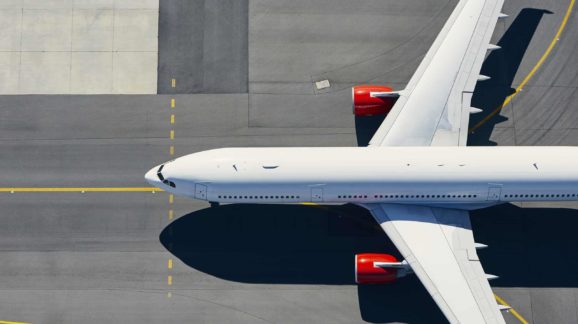5G Debacle Shows How Poor Governance Threatens Aviation Innovation
The U.S. aviation industry almost came to a halt earlier this month over the Federal Aviation Administration’s (FAA) and airlines’ last-minute objection to 5G deployment in the mid-band spectrum. Although the FAA’s skepticism of 5G safety played a major role, ineffective governance and poor management of interagency conflict, especially during the Trump administration, have been key factors in this debacle. Policymakers need to confront the challenges that poor federal oversight poses to technological innovation and the future of American leadership in 5G-enabled technologies.
After performing detailed technical analysis and consulting with the FAA, the Federal Communications Commission (FCC) cleared AT&T and Verizon to deploy their 5G networks in the mid-band spectrum in December 2021. Despite having had ample opportunities to voice objections earlier, the FAA and airlines issued a last-minute warning that mid-band waves will interfere with aircraft altimeters (altitude instruments), without providing evidence for such claims.
Yet, international experience suggests that 5G mid-band deployment and aviation systems can coexist without harmful interference. Notwithstanding some differences in radio frequency and power, nearly 40 countries have allocated mid-wave spectrums for 5G usage without any significant cases of interference. Furthermore, U.S. aviation systems use a communications system called Wireless Avionics Intra-Communications (WAIC), which has operated in the same spectrum as radio altimeters without any known instance of harmful interference.
To support its claims of harmful interference, the FAA relied on a report from the Radio Technical Commission for Aeronautics (RTCA), which industry experts have criticized as being “conservative” and lacking “sufficient evidence” for its interference claims. Several countries, including France and Norway, have conducted tests that concluded that 5G and aviation systems can coexist without harmful interference. Despite an offer by the National Telecommunications and Information Administration (NTIA) to test equipment in civilian aircraft, the FAA was reportedly reluctant to conduct such tests because the latter would not play a significant role in them. Furthermore, FCC decisions are often subject to lawsuits, but neither the FAA nor any airline filed suit objecting to the mid-band spectrum allocation.
After nearly causing major flight disruptions, the FAA last week cleared 78 percent of aircraft for landing in airports with 5G C-band. But it should have evaluated altimeters for safety in February 2020, when the FCC approved C-band spectrum for 5G — or at the latest by February 2021, when the FCC auctioned mid-wave 5G bands to telecommunications companies. Instead, the FAA waited until the last minute to approve altimeters, an outcome that would have been even less likely without the intervention of Transportation Secretary Pete Buttigieg. Nevertheless, an earlier intervention from the Biden administration would have helped prevent disruption and uncertainty for airline passengers and telecommunications users alike.
The problem goes beyond the FAA’s opposition to the 5G mid-band spectrum. The NTIA, a branch of the Department of Commerce, coordinates telecommunications policies between the White House and executive agencies with jurisdiction over spectrum policy. Although the Trump administration publicly emphasized the importance of 5G in the context of U.S.-China strategic competition, the NTIA failed to develop a national spectrum policy in time. After the NTIA chief resigned abruptly in May 2019 after criticizing the Trump administration’s 5G policy, four leaders rotated during the last 20 months of the Trump presidency, further undermining the NTIA’s role in managing interagency communications.
Read the full article at The Hill.
